UConn Study: Look-alike ‘Smart Snacks’ Confuse Students, Parents
/Unhealthy snack food brands such as Cheetos, Fruit-by-the-Foot and Froot Loops have reformulated their products to meet new USDA Smart Snacks nutrition standards so they can be sold to kids in schools. But these products often come in packages that look similar to the unhealthy versions of the brands that are still sold in stores and advertised widely to youth.
Selling these look-alike Smart Snacks in schools confuses students and parents, provides companies a way to market their brands to kids in schools, and may hurt schools’ credibility, according to a new study by the Rudd Center for Food Policy and Obesity at the University of Connecticut, published in the journal Childhood Obesity and reported by UConn Today.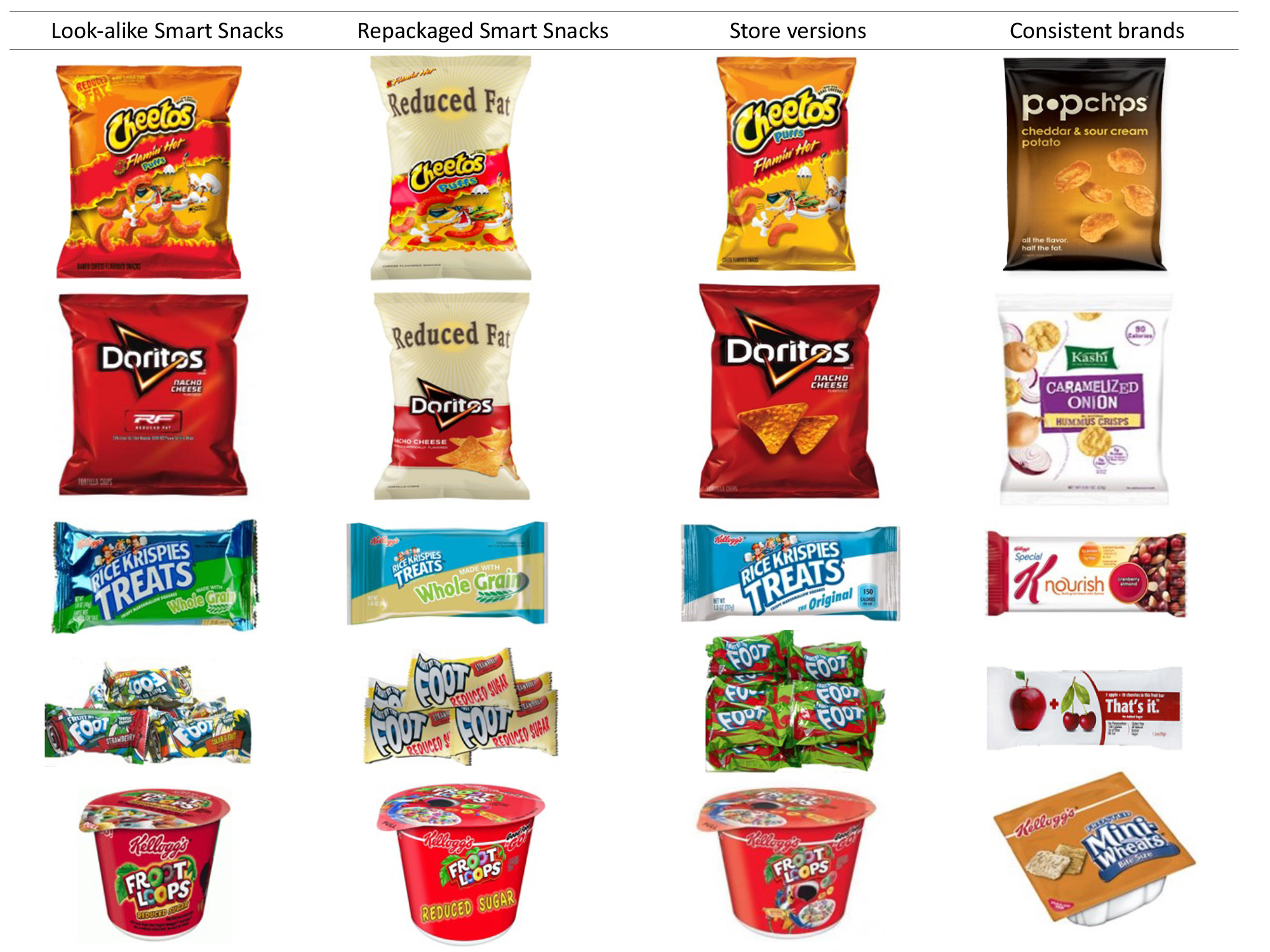
It is the first to examine how selling look-alike Smart Snacks in schools affects attitudes about the brands and perceptions of schools selling these products.
“Kids think the healthier Smart Snacks they can buy in school are the same products that are sold in stores,” says Jennifer Harris, lead author of the study and director of marketing initiatives for the UConn Rudd Center. “It’s confusing because the packaging for these look-alike Smart Snacks looks so much like the less nutritious versions that kids see advertised on TV and in the stores.
“This is a great marketing tool,” she adds. “The snack makers get to sell their products in schools and at the same time market their unhealthy brands to kids every school day.”
The study involved an online experiment with 659 students 13 to 17 years old, and 859 parents of children 10 to 13 years old. The participants viewed information about a hypothetical school that sold either look-alike Smart Snacks, regular versions of the same brands sold in stores, Smart Snacks in redesigned packages, or only brands whose regular products met Smart Snacks standards.
Specific findings of the study include:
- Students and parents rated the healthier look-alike Smart Snacks similarly in taste, healthfulness, and purchase intent as the store versions, while considering Smart Snacks in different packages to be healthier but less tasty.
- Most participants inaccurately believed they had seen look-alike Smart Snacks for sale in stores.
- Participants also rated schools offering the look-alike Smart Snacks and the store versions of the brands as less concerned about students’ health and well-being.
 “The practice of selling look-alike Smart Snacks in schools likely benefits the brands,” says Harris, “but may not improve children’s overall diet, and undermines schools’ ability to teach and model good nutrition.”
“The practice of selling look-alike Smart Snacks in schools likely benefits the brands,” says Harris, “but may not improve children’s overall diet, and undermines schools’ ability to teach and model good nutrition.”
The Rudd Center for Food Policy & Obesity relocated to UConn in 2015 after 10 years at Yale. The Center is a distinguished multi-disciplinary policy research center dedicated to promoting solutions to childhood obesity, poor diet, and weight bias through research and policy. The Rudd Center is a leader in building broad-based consensus to change diet and activity patterns by conducting research and educating policy makers and the public.
The research was funded by a grant from the Michael & Susan Dell Foundation.


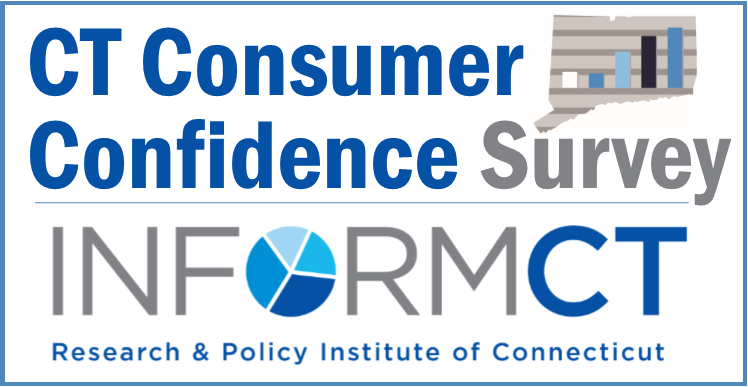
 Increasingly, residents believe that jobs are “very hard to get” in Connecticut compared with six months ago (from about one-quarter to one-third of those surveyed in Q2 2016 versus Q2 2015), and are, in growing numbers, saying they would rather leave than stay.
Increasingly, residents believe that jobs are “very hard to get” in Connecticut compared with six months ago (from about one-quarter to one-third of those surveyed in Q2 2016 versus Q2 2015), and are, in growing numbers, saying they would rather leave than stay.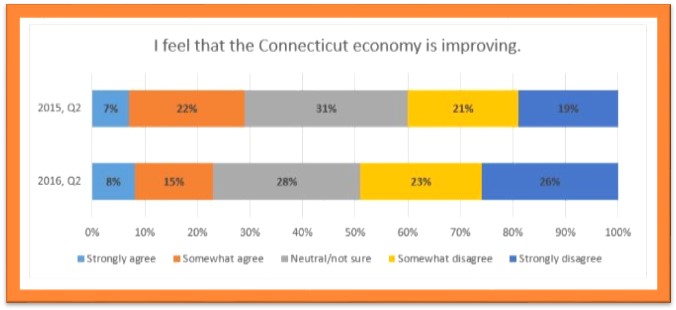 Forty-three percent, an increase from 40 percent in the year’s first quarter, answered “all of the above” when asked if education, libraries, public health, public safety and animal control could be provided regionally. Among those services individually, there was slightly greater support for a regional approach to public safety, slightly less for each of the others. The largest increase was for “all” of the services.
Forty-three percent, an increase from 40 percent in the year’s first quarter, answered “all of the above” when asked if education, libraries, public health, public safety and animal control could be provided regionally. Among those services individually, there was slightly greater support for a regional approach to public safety, slightly less for each of the others. The largest increase was for “all” of the services.

 The
The  A minimum-wage worker in Connecticut would need to work full time for 36 weeks, or from January to September, just to pay for child care for one infant. And a typical child care worker in Connecticut would have to spend 63.6% of her earnings to put her own child in infant care, according to the data.
A minimum-wage worker in Connecticut would need to work full time for 36 weeks, or from January to September, just to pay for child care for one infant. And a typical child care worker in Connecticut would have to spend 63.6% of her earnings to put her own child in infant care, according to the data.



 Among the leading searches this year in the U.S. are driving anxiety, travel anxiety, separation anxiety, anxiety at work, anxiety at school and anxiety at home. Connecticut is the only New England state where the rate of Google searches for anxiety is not more than 10 percent above the national average. The analysis indicates that “Americans anxieties are up 150 percent compared with 2004, based on internet searches.” And still climbing.
Among the leading searches this year in the U.S. are driving anxiety, travel anxiety, separation anxiety, anxiety at work, anxiety at school and anxiety at home. Connecticut is the only New England state where the rate of Google searches for anxiety is not more than 10 percent above the national average. The analysis indicates that “Americans anxieties are up 150 percent compared with 2004, based on internet searches.” And still climbing.



 running in communities including Hartford, New Britain, Trumbull, Bethel, Stamford, Norwalk, Manchester, Milford, Danbury, New Milford, Ridgefield, Brookfield, Wallingford. Another is expected soon in East Haven.
running in communities including Hartford, New Britain, Trumbull, Bethel, Stamford, Norwalk, Manchester, Milford, Danbury, New Milford, Ridgefield, Brookfield, Wallingford. Another is expected soon in East Haven.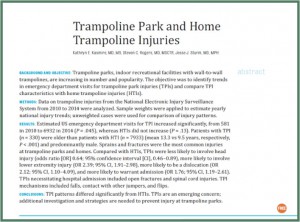 s," the organization said following publication of the study.
s," the organization said following publication of the study.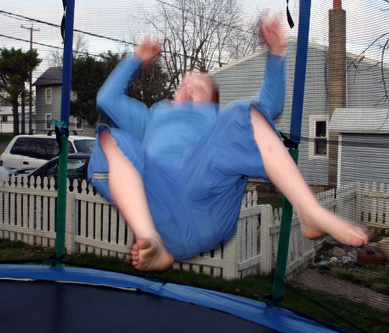

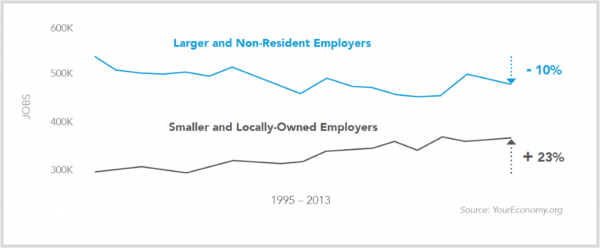 Local and regional organizations and associations, such as the MetroHartford Alliance’s HYPE, reSET, United Way’s Emerging Leaders and the Urban League’s Young Professionals “engage and connect millennials” and offer “business advisory services and other supports to help small businesses thrive,” the report explains, providing “a great start” on what needs to be done.
Local and regional organizations and associations, such as the MetroHartford Alliance’s HYPE, reSET, United Way’s Emerging Leaders and the Urban League’s Young Professionals “engage and connect millennials” and offer “business advisory services and other supports to help small businesses thrive,” the report explains, providing “a great start” on what needs to be done.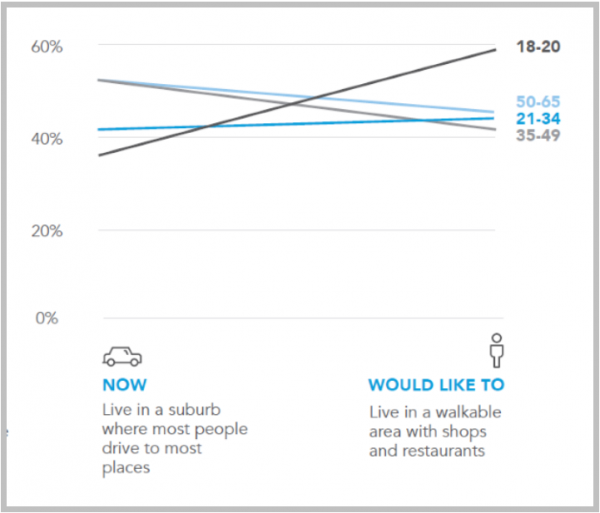 The report includes a timeline of past efforts aimed at addressing the region’s long-standing challenges, “not to be disheartening, but instead to highlight where positive changes have been made” and how collaborative efforts can “create opportunities for all Greater Hartford residents.” The report also indicates that:
The report includes a timeline of past efforts aimed at addressing the region’s long-standing challenges, “not to be disheartening, but instead to highlight where positive changes have been made” and how collaborative efforts can “create opportunities for all Greater Hartford residents.” The report also indicates that: The NCHS data also ranked Connecticut 12th in the Cesarean Delivery Rate.
The NCHS data also ranked Connecticut 12th in the Cesarean Delivery Rate. Regarding the percentage of babies born to unmarried mothers, a statistic long tracked by federal health officials, three states saw more than half the children born in that category. The highest percentages were in Mississippi (54.0%), Louisiana (52.7) and New Mexico (51.3%).
Regarding the percentage of babies born to unmarried mothers, a statistic long tracked by federal health officials, three states saw more than half the children born in that category. The highest percentages were in Mississippi (54.0%), Louisiana (52.7) and New Mexico (51.3%).


























